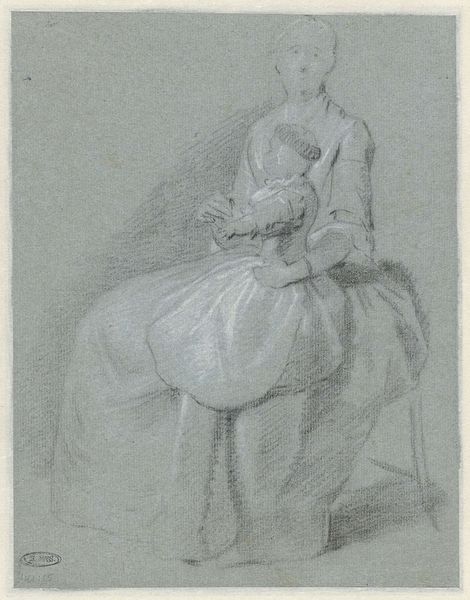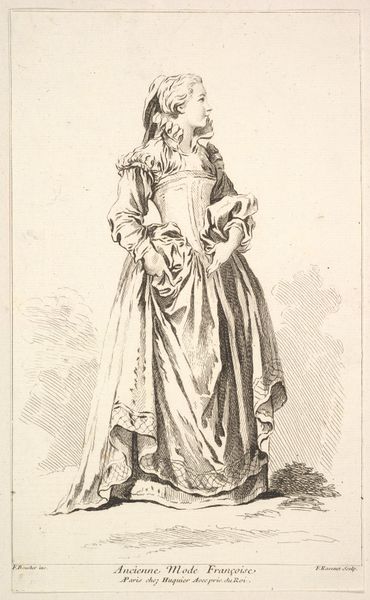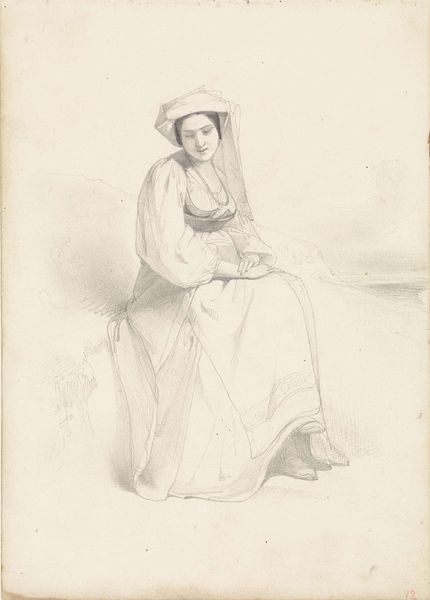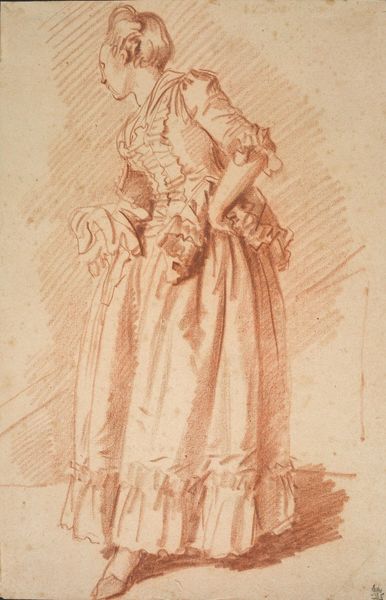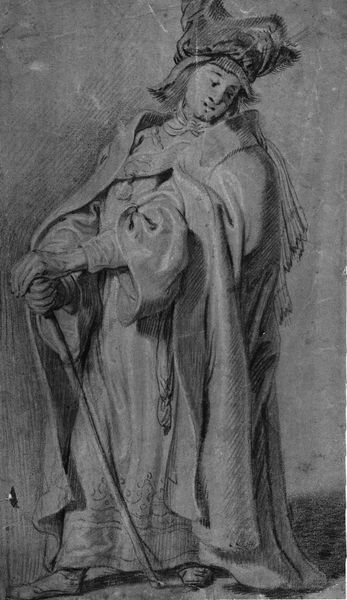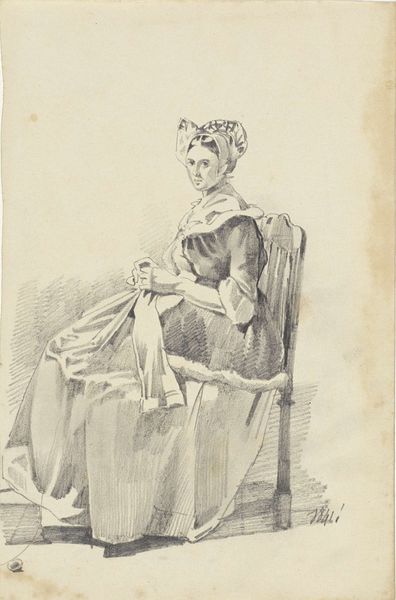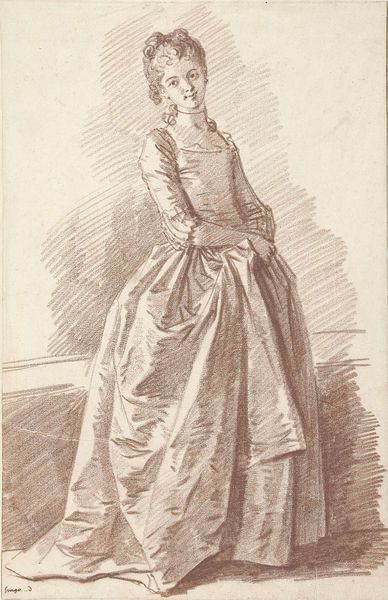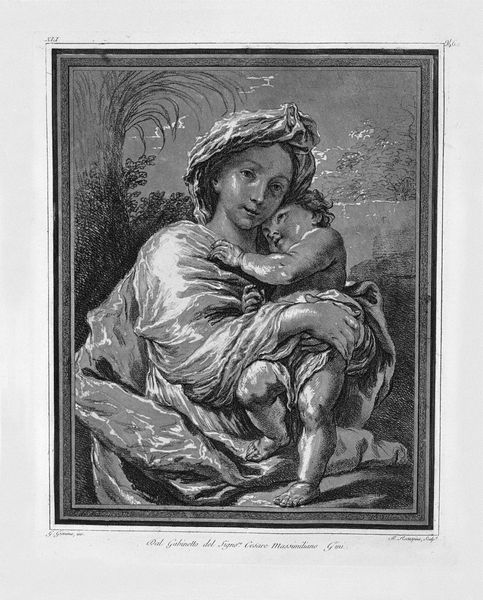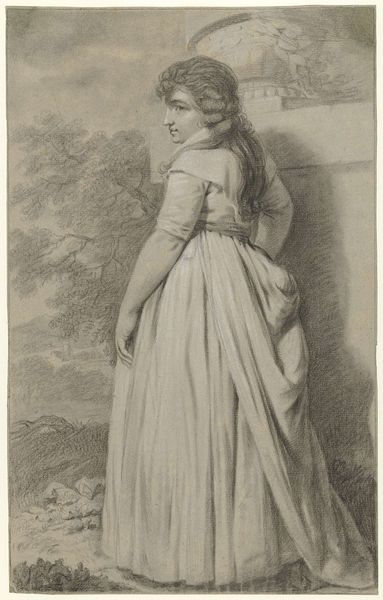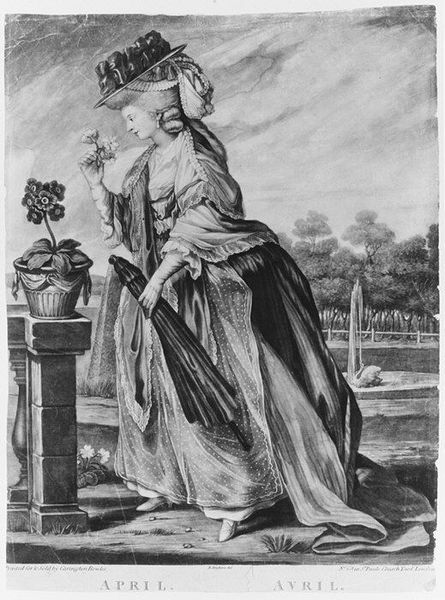
Knælende figur på en pude med turban. Vendt mod venstre. Hændene foldet over brystet. 1668 - 1671
0:00
0:00
drawing, charcoal
#
portrait
#
drawing
#
baroque
#
charcoal drawing
#
figuration
#
black and white
#
line
#
portrait drawing
#
charcoal
Dimensions: 425 mm (height) x 263 mm (width) (bladmaal)
Editor: Here we have Karel van Mander III’s "Kneeling Figure on a Cushion with Turban," a charcoal drawing from around 1670. The figure is so pensive, almost lost in thought. How do you interpret this work, especially its emotional weight? Curator: This image speaks to the enduring fascination with the "exotic" other, doesn't it? The turban immediately reads as foreign, inviting the viewer into a world of orientalist fantasy. It also hints at how cultural symbols—even items of clothing—accumulate layers of meaning. The turban, beyond mere fashion, evokes notions of trade, religion, and perceived difference. Editor: So, it's less about the individual and more about the cultural baggage the turban carries? Curator: Precisely! And consider the kneeling posture and folded hands. While suggestive of piety, is it genuine devotion or a performance for the artist’s, and subsequently our, gaze? There’s a delicate balance between reverence and objectification at play, embedded in the symbology of posture and attire. Editor: I hadn’t thought about it that way, about the gaze itself being loaded. Are there other symbolic elements to consider? Curator: Look at the use of light and shadow. See how the artist renders the fabric, almost tactile, yet the figure’s face remains partially obscured. What could this obscuring suggest about the artist’s intentions or even the viewer’s projections? Editor: It’s like the figure is both present and distant, known and unknown, all at once! The symbolism definitely enriches the drawing. Curator: Indeed. And reflecting on it all, it reminds us how images not only reflect but also actively shape our understanding of cultural narratives. It encourages me to reflect upon what other images might cause these reflections to surface for us, even today.
Comments
No comments
Be the first to comment and join the conversation on the ultimate creative platform.


